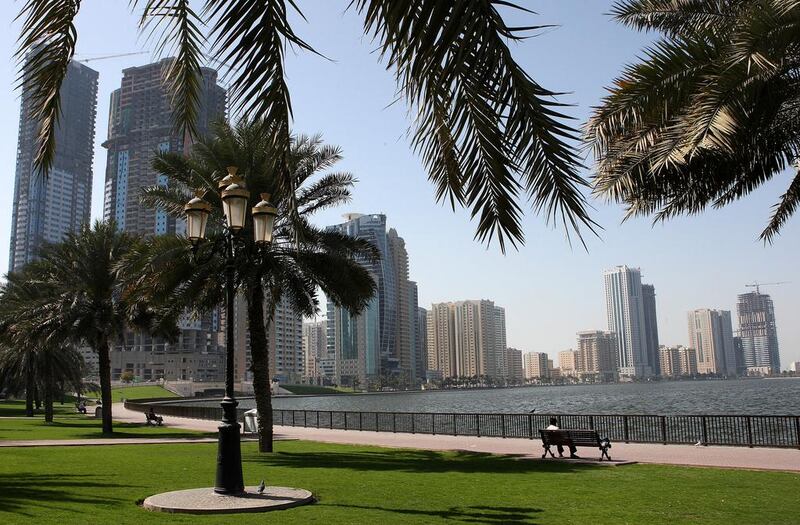The invigorating call of the Eid Takbeer flowing from the minarets of mosques is a sound familiar to every Muslim during Eid. This timeless chant “Allah is the Greatest, There is no deity but Allah and to Allah is all praise and gratitude”, heralds the beginning of the Eid festivities.
But for me and many Arab children growing up in the 1980s, another sound signified Eid, that of a cheesy but popular Egyptian pop song: “Ahlan to Eid, Eid is the best of joy, sing with me about Eid”. It would blare from TVs and radios, welcoming the joyous occasion.
As a child growing up in Sharjah, Eid was a very exciting time that had its special rituals.
These started weeks before the actual event and would be kicked off by visits to the Old Souq, which was in the heart of Sharjah. We would go there to buy clothes, shoes and accessories.
But ready-made clothes were only available for younger children, so older girls had to buy fabric and send it to the tailors to be cut into shape and finished into an outfit. But, because the tailors were overwhelmed with orders, their finished products were not always the best.
I remember as a pre-teen being forced to wear dresses with sleeves falling off my shoulder, or dresses that were too long – each one betraying the shortcomings of the pre-Eid rush and each one unable to be properly finished until after the holidays.
Nowadays, we are spoilt for choice and our wardrobes are stuffed with shopping from the countless malls that fill the country.
Another tradition, which has survived, but with a modern touch, is henna application.
The day or two before Eid is spent in a queue at the salon waiting for intricate henna designs to be applied to hands and feet. These days, specialists use henna mixed with chemicals, to give it a dark colour, apply the paste using a plastic cone similar to the ones used to pipe icing onto cakes. It is all a far cry from my childhood when henna was made from a paste mixed with a concoction of tea leaves boiled for hours to give it the dark orange colour.
For the girls who were lucky, those, for example, who had artistic sisters or cousins, henna was applied with a match stick dipped onto the paste to draw a basic flower pattern on the palm.
If you didn’t have such sisters, then your mother would just dip her fingers in the paste and make round circles on your palms. Even better – or worse – they would just dip your hands into the paste and you ended up with orange palms. This was usually the fate of fidgety little girls who wouldn’t sit still. And poor things, what a sight they were, walking around with bright orange palms.
The henna was applied in the salah (living area) in the house under whirring ceiling fans, in an effort to speed up drying of the paste.
For me the best part of Eid was collecting eidiya (gift money). The moment men came back from Eid prayers, out we rushed in our new clothes and finely combed hair, scouring the neighbourhood for coins. We would scamper around the neighbourhood for hours, knocking on doors asking for eidiya. But it’s not like we roamed around randomly knocking on doors, there was always a strategy involved.
Foolproof methods of collecting a good eidiya consisted of not bothering to knock on locked gates, because the occupants never gave anything. We’d also remember where the generous houses were and make sure we beat other kids to them. Of course, being a good kid before Eid always put you in the good books of parents and guaranteed a good eidiya.
We would be so grateful if anybody gave us a dirham (we usually got 50 fils), and any house that gave us two dirhams would have a long line of kids waiting outside.
At lunch time, we would head back home, a happy, scruffy, dishevelled lot, wearing dirty clothes, missing hair-ribbons and sometimes even shoes.
The small neighbourhood shops did very well during Eid, as more often than not they were filled with kids flush with money, gorging themselves on sweets.
The demise of the old traditional neighbourhoods suggests that the custom of knocking on doors to collect eidiya might be waning.
But, of course, the traditions refuse to die altogether. They have now moved to a new location, the mosque during Eid prayers. Many women come with little gift bags for the children. Others, especially older women, surprise them by pulling out crisp Dh5 and Dh10 notes, spreading the joy of Eid to a newer generation.
Shadiah Abdullah Al Jabry is a regular contributor to The National





